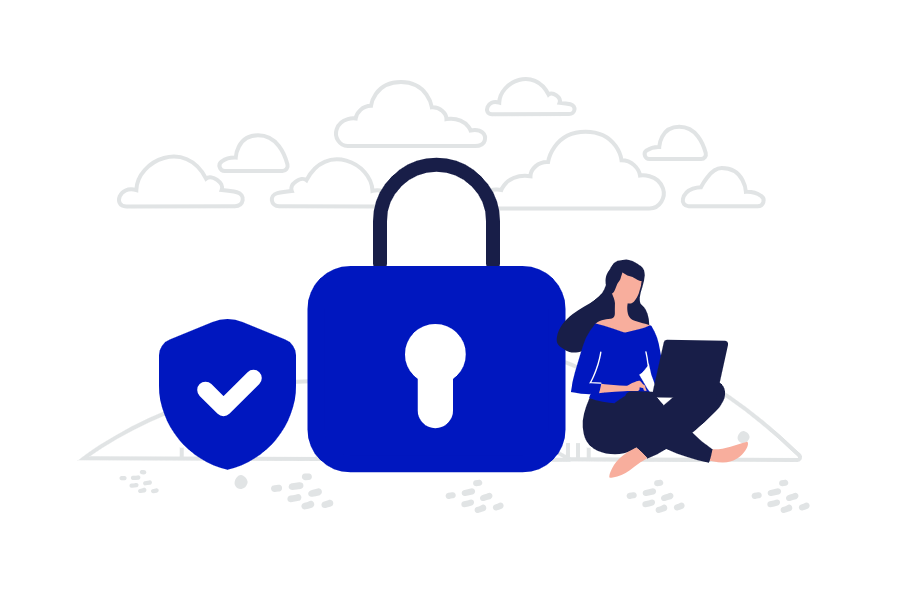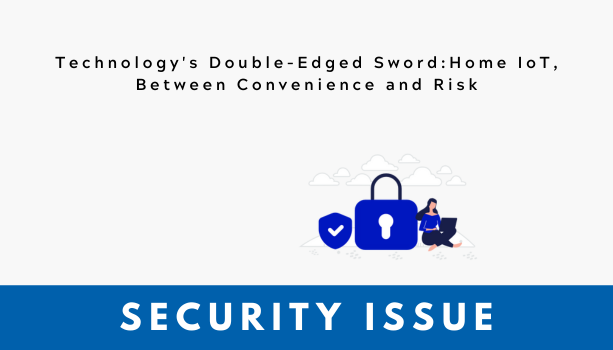[Security Issue] Technology’s Double-Edged Sword: Home IoT, Between Convenience and Risk
Recently, the Personal Information Protection Committee has launched a comprehensive preliminary investigation into the collection and use of personal information by major robot vacuum cleaners both domestically and internationally. This initiative stems from growing awareness of the risk of personal information leakage that may occur as rapidly proliferating Internet of Things (IoT) devices become deeply embedded in our daily lives. With smart devices posing potential risks of intruding into our personal lives beyond simply providing convenience, how safe is our privacy?

The Surge in Home IoT Devices and the Gravity of Information Collection
According to recent statistics, the number of home IoT devices worldwide is projected to exceed 75 billion by 2025. Korea is also at the center of this global trend, with the penetration rate of smart home devices increasing by more than 20 percent annually. This explosive growth is simultaneously creating serious privacy concerns. The security of home IoT devices goes beyond being just a technical issue to affecting a person’s fundamental privacy rights. Smart home devices maintain detailed records of our daily lives and collect personal information, sometimes unintentionally. Robot vacuum cleaners, smart air conditioners, and voice recognition speakers have the potential to collect detailed information about users’ lifestyles, conversation content, and even their home layouts. In other words, today’s smart devices are evolving into ‘information collection devices’ that observe and record our entire lives beyond being simple tools.
A robot vacuum cleaner goes beyond just cleaning floors and maps out detailed floor plans of homes, furniture layouts, and users’ lifestyles. Smart air conditioners closely track personal lifestyle habits such as temperature preferences, room usage, and work schedules. Voice recognition speakers collect users’ conversations, voice data, and personal preferences, while smart refrigerators also continuously record and analyze information on eating habits, food purchase patterns, and family members. These devices are constantly monitoring a person’s daily life often without the user’s knowledge.
Cases of Domestic and International Home IoT Device Security Threats
Security vulnerabilities in home IoT devices have caused serious privacy breaches worldwide.
The massive smart camera breach in Germany severely compromised user privacy across 56 countries in 2019. Millions of real-time videos and pieces of personal information were left unprotected and exposed on the Internet, allowing hackers easy access. The 2020 smart speaker eavesdropping scandal in the United States revealed that company employees were listening to private conversations without user consent. Thousands of private conversations were recorded and analyzed annually, constituting a serious privacy invasion. The massive smart home device privacy breach in China in 2021 resulted in the hacking of approximately 100 million users’ information. The need for national-level cybersecurity responses became more urgent as location and personal identification information were leaked en masse.
Korea is no exception. Similar cases of serious security breaches have occurred in Korea. In 2022, a smart home appliance mobile application exposed a security system that was vulnerable to hacking due to insufficient data encryption. This created potential risks of privacy law violations. In 2023, personal private images were leaked without authorization through a home CCTV hacking incident, with secondary damage occurring through online platforms. This incident clearly demonstrated how vulnerable the security infrastructure of home IoT devices currently is.

Creating a Safe IoT Environment: Manufacturers’ Security Responsibilities and Consumers’ Smart Choices
It should be noted that the primary responsibility for IoT device security lies with manufacturers, not individual users. It is practically impossible for average consumers to understand and implement complex security protocols. Therefore, manufacturers must prioritize security from the design stage and develop their products using an integrated approach that fundamentally protects user privacy.
From this perspective, data encryption is the most fundamental and important element of home IoT device security. All personal information collected through devices must be rigorously protected through encryption technology and must fundamentally block unauthorized external access. Penta Security’s encryption platform D.AMO (Diarmo) securely protects data through encryption, encryption/decryption key management, access control, auditing, and monitoring to ensure that data contents remain protected even when exposed. Diarmo offers a diverse suite of products to optimize and implement performance and security solutions tailored to customer system architectures.
Additionally, unauthorized access should be effectively prevented by restricting device access and introducing multi-factor authentication systems. This approach fundamentally prevents unauthorized users from accessing personal information. Penta Security’s authentication platform iSIGN provides secure authentication services across various IT environments. iSIGN delivers enhanced authentication capabilities, such as resource access control and user identification by providing multiple authentication methods using Mobile OTP apps, PKI, FIDO, etc., thereby reducing the risk of authentication breaches.
Consumers should prioritize products from security-conscious manufacturers. Security, not just price or functionality, should be a key consideration when making purchasing decisions. These consumer choices provide strong incentives for security-conscious companies to gain competitive advantages in the market.
In the United States, the CyberTrust Mark system helps consumers easily assess security levels. This certification mark serves as a trust indicator that allows consumers to determine at a glance whether a product has met certain security standards when purchasing an IoT device. These marks can only be obtained if devices meet essential security requirements such as data encryption, security updates, and access control, helping consumers choose safer products. Such certification schemes offer manufacturers incentives to strengthen security, while also providing standards to help consumers confidently choose products. Korea also needs to introduce a similar clear security certification system. A system that strengthens manufacturer responsibilities while helping consumers make informed choices would effectively improve the security level of the entire IoT ecosystem.
Home IoT device security is no longer optional, but an essential requirement. Technological advances should make our lives more convenient, but individual privacy and fundamental rights should never be compromised in the process. Only when manufacturers develop secure products with security consciousness, and consumers drive positive market change by choosing products that prioritize security, can we secure digital privacy. This preliminary investigation by the Personal Information Protection Committee is highly significant in this context. Governments, businesses, and individuals must all raise awareness and actively address home IoT device security concerns.
* Would you like to learn more?
We invite you to discover how we can help your business.
